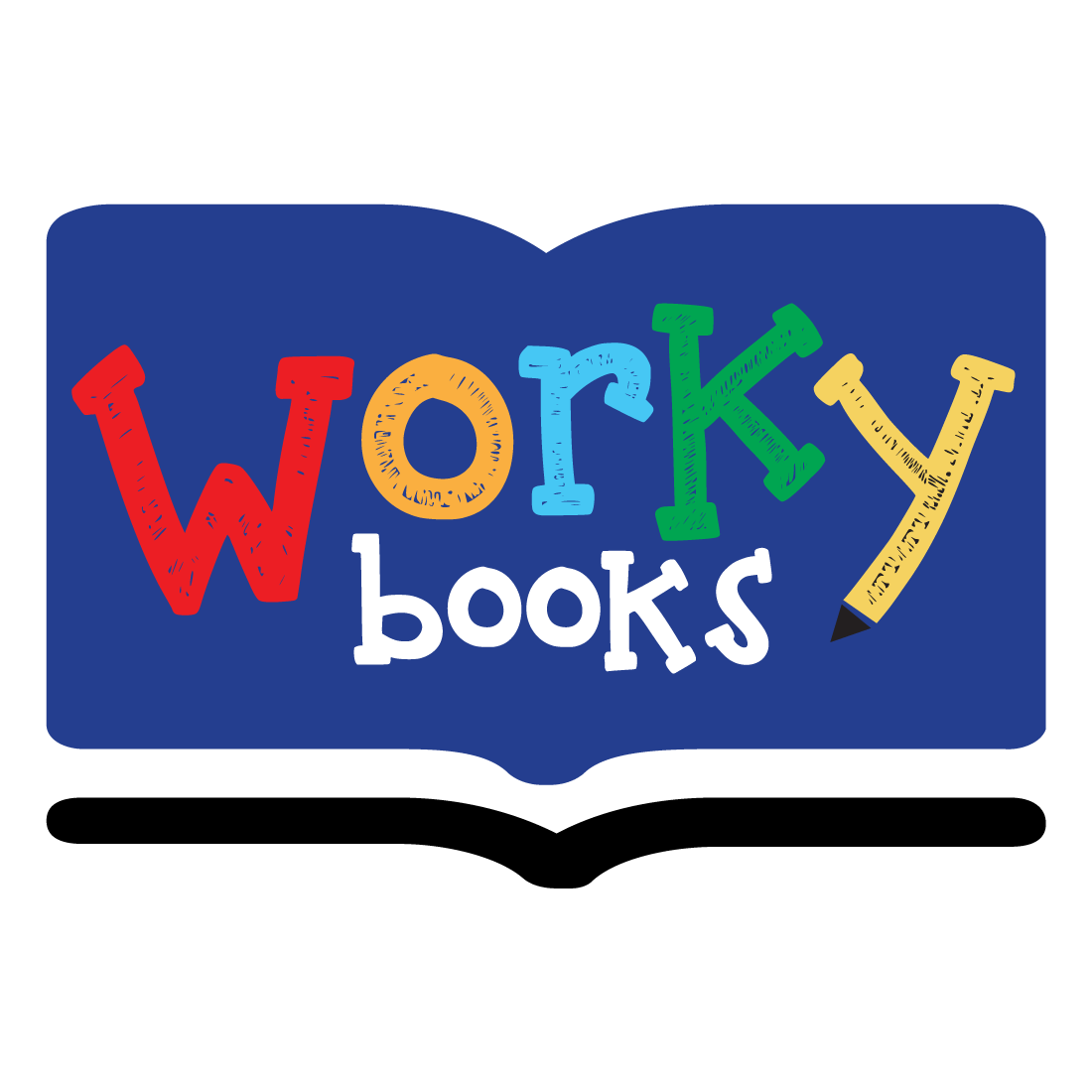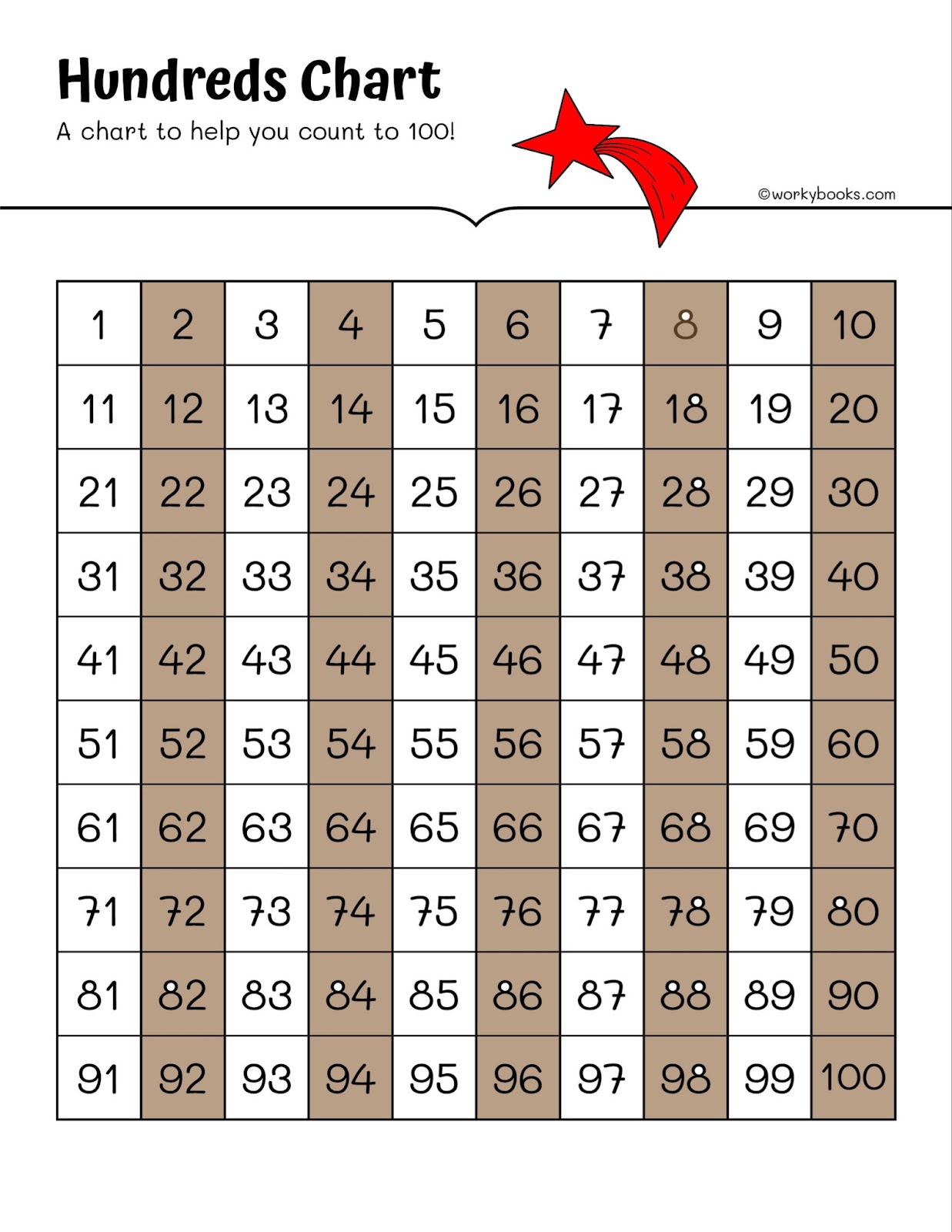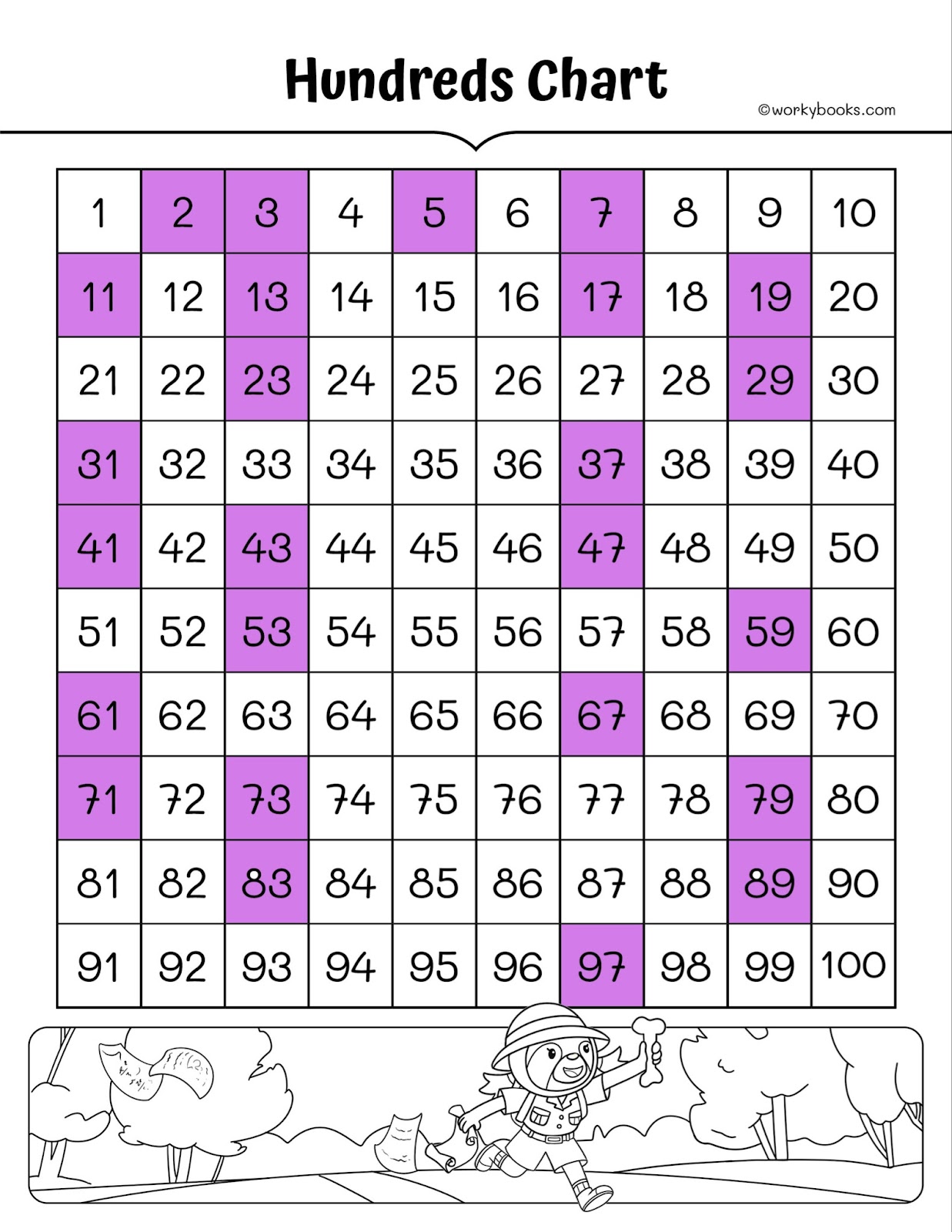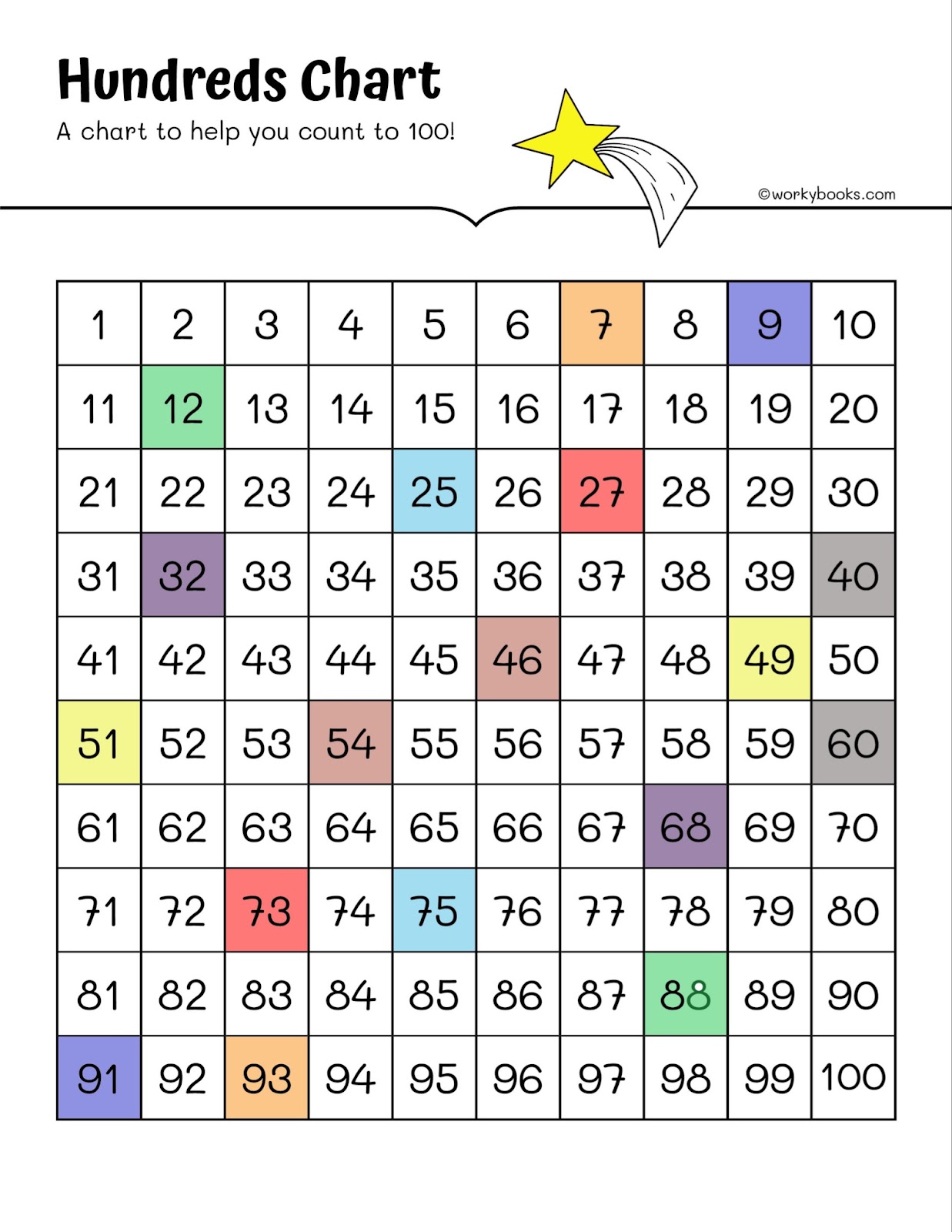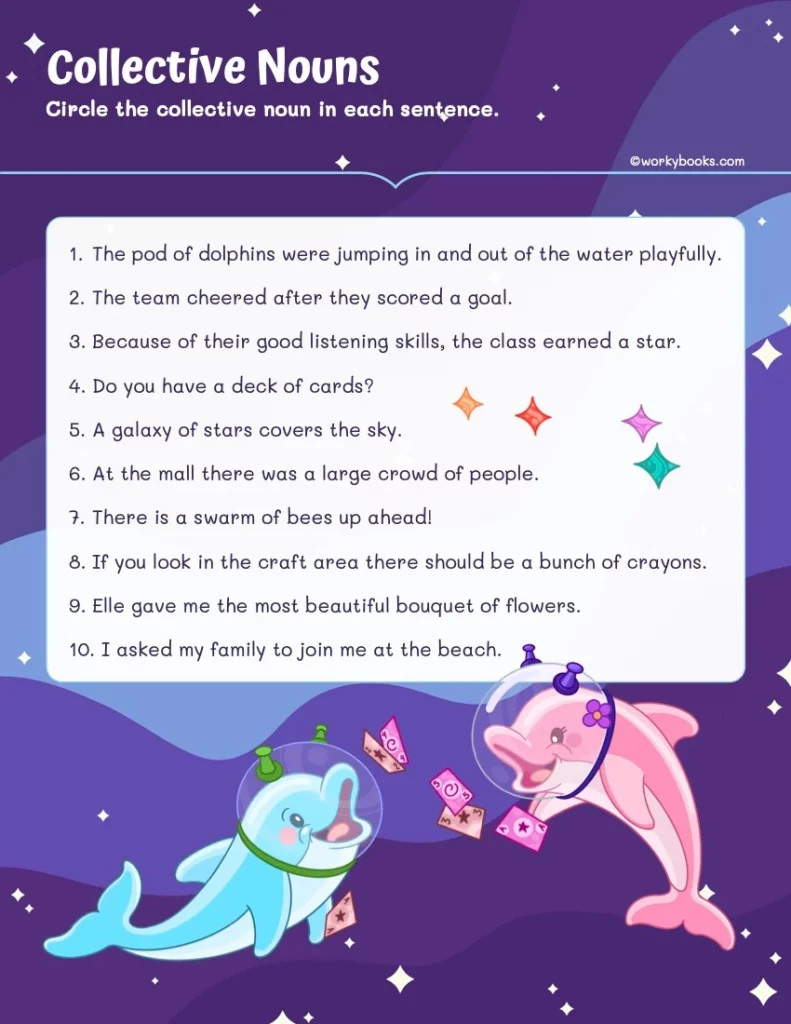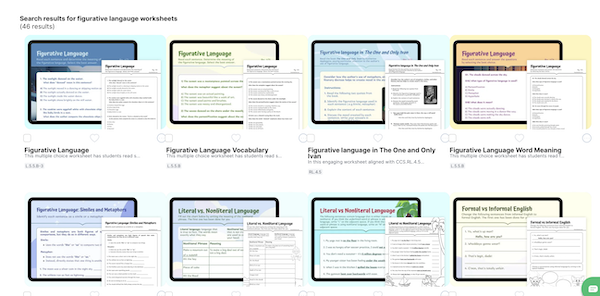100 Number Chart Activity
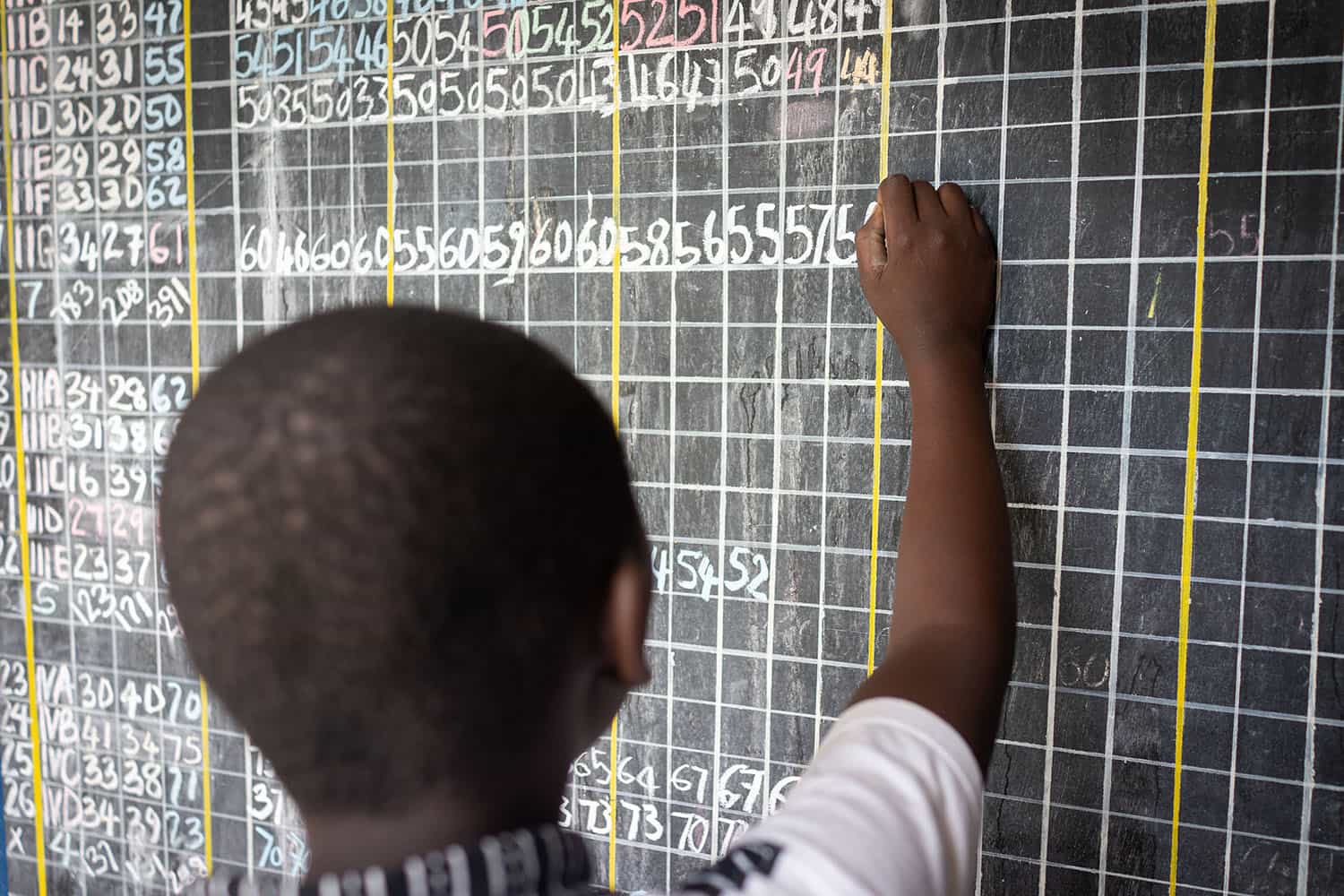
To make the 100th Day School special, why not incorporate some fun Math activities?
Celebrating the 100th day of school is a milestone that signifies that students have successfully completed a significant portion of the school year.
A 100 number chart is simply a grid that has numbers 1 to 100 listed in rows and columns. This chart is a good tool to reinforce counting, place value, and basic operations. It’s also a great way to get creative and have some fun with numbers.
Here’s how to get started: Introduce the activity to your students. Explain that they will be working with a 100 number chart and finding different patterns, sums, and sequences.
Provide each student with a 100 number chart. These charts can be easily found here and printed for each student.
Gather materials: You will need a 100 number chart, a pen or pencil, and some small treats like candies or stickers.
Give each student a copy of the 100 number chart. Instruct them to mark off all the numbers from 1-100 as you count aloud. For example, when you say the number “three,” the students should mark off the number three on their chart.
Review the numbers 1-100 with your students by counting together. Point out patterns and talk about odd and even numbers. Ask them to mark all even numbers on the chart.
Mark the Prime Numbers – Have your students look at the number chart and identify the prime numbers. These are the numbers that can only be divided by 1 and themselves. There are 25 prime numbers- 2, 3, 5, 7, 11, 13, 17, 19, 23, 29, 31, 37, 41, 43, 47, 53, 59, 61, 67, 71, 73, 79, 83, 89, 97
Find the Factors of 100 – Ask your students to find all the factors of 100. As the number 100 is an even composite number, 100 has many factors other than 1 and the number itself. Factors are the numbers that can be multiplied together to get 100.. Thus, the factors of 100 are 1, 2, 4, 5, 10, 20, 25, 50, and 100. Here is the chart for factors 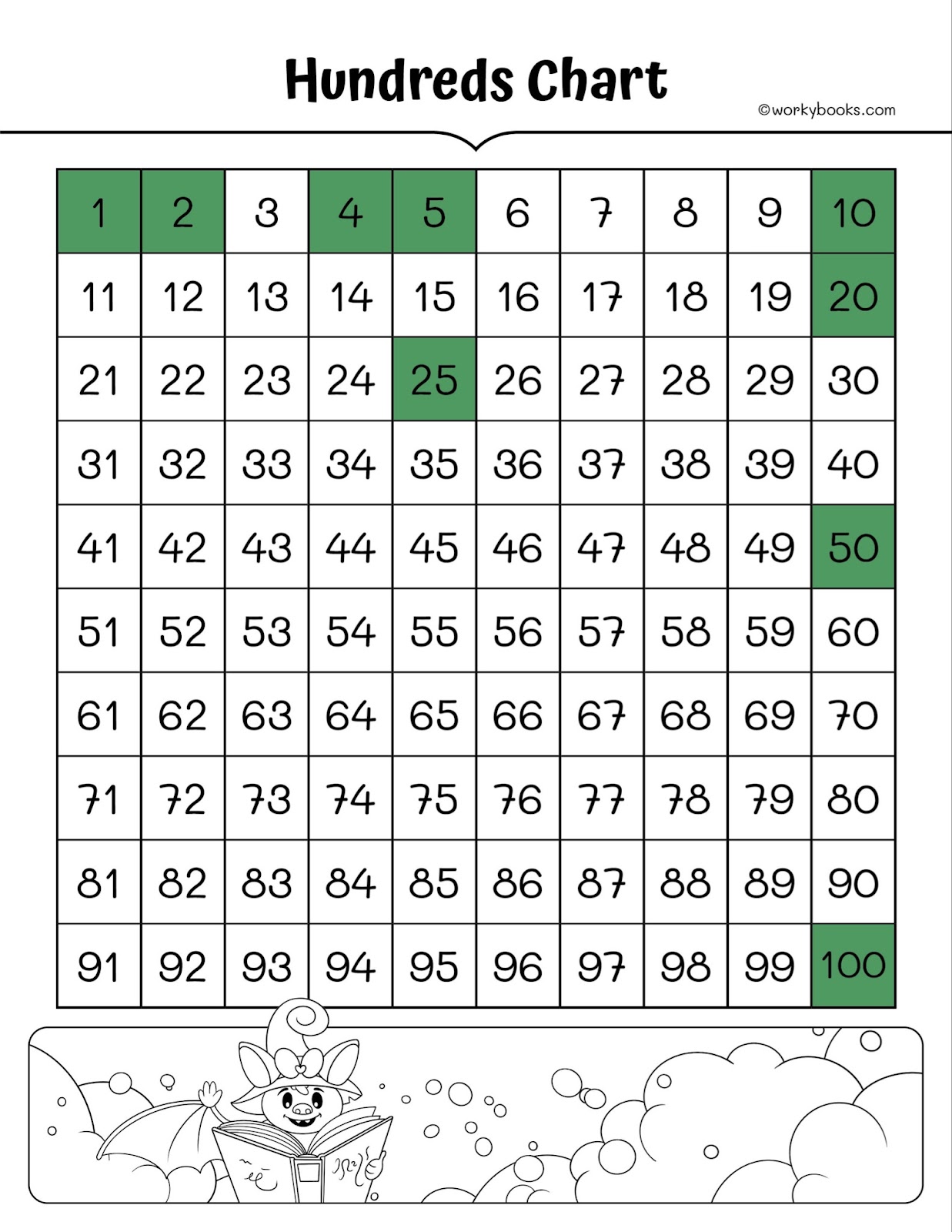
Identify Multiples of 4 – Ask your students to find all the multiples of 4 on the chart as shown below.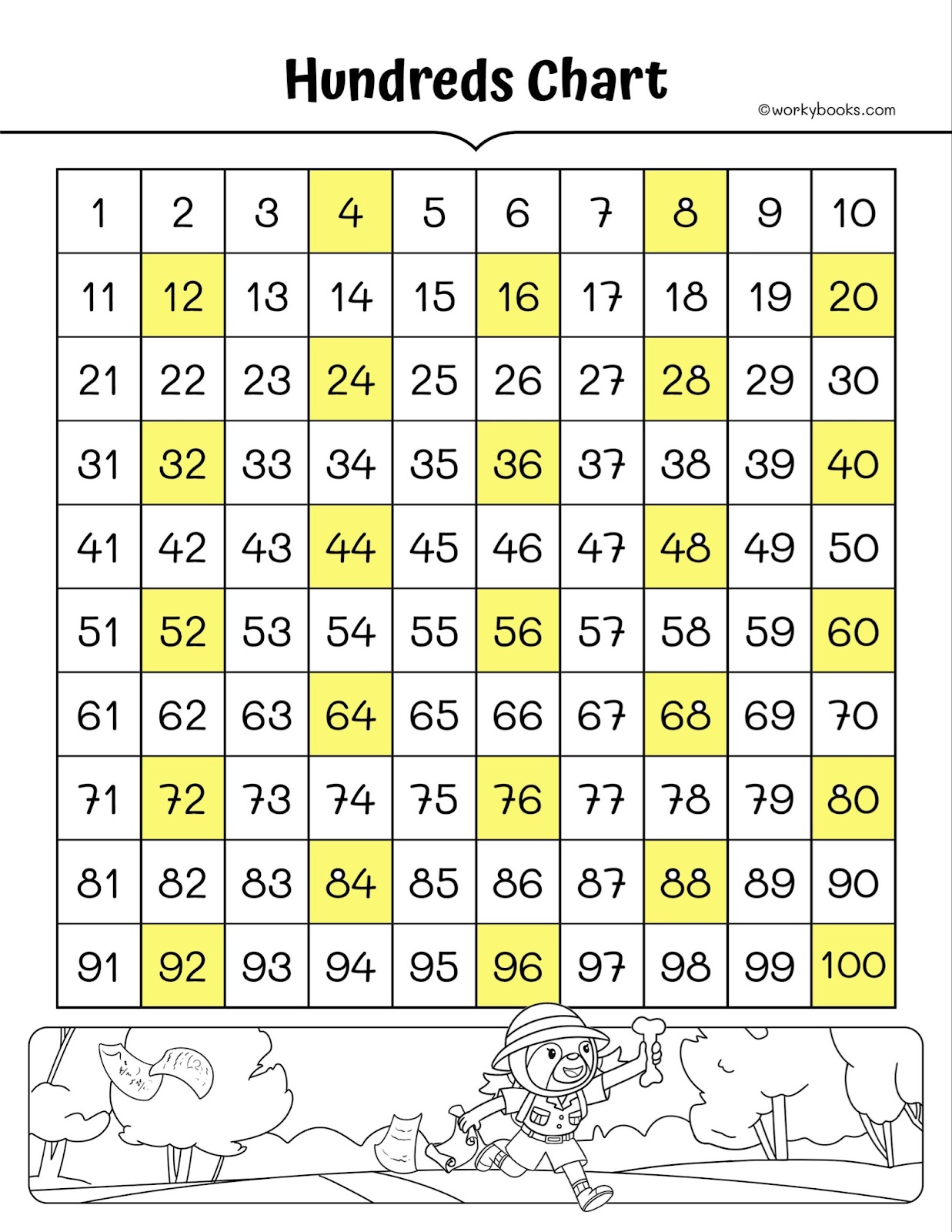
Lastly, challenge them to practice addition or subtraction of the numbers using the chart. Ask questions like “What is the difference between 10 and 50?” or “What is the sum of 39 and 61?”
Reward the kids with candies for correct answers. Celebrate each number: As each student finds and marks a number, have them share it with the class and celebrate it with a treat.
Next, find two numbers that add Up to 100. Have your students locate two numbers on the chart that add up to 100. You can also make this more challenging by having them find three or four numbers that add up to 100. Color the total of two numbers in same color as shown below.
Bonus activity : In class activity
- Write the numbers 1 to 100 in a line on a piece of paper.
- Cut out each number and place them in a pile.
- Have the students draw 10 numbers from the pile and place them in a column.
- Ask the students to find the total of their 10 numbers and write it at the bottom of the column.
- Repeat steps 3 and 4 until all 100 numbers have been used.
- At the end, have the students add up all their totals and write the final answer.
- Ask the students to share their final answer and discuss if anyone got the same total.
This activity helps reinforce counting, addition, and mental math skills. Have fun!
Workybooks is a great tool for educators and parents alike, as it allows them to create customized learning experiences for their children that are tailored to their individual needs. It allows children to explore a variety of topics, such as math, science, language, and more, at their own pace. Workybooks uses a combination of visuals, audio, and text to create engaging and informative lessons that enhance children’s learning experience. The platform also allows children to track their progress and receive feedback from teachers, and parents.
